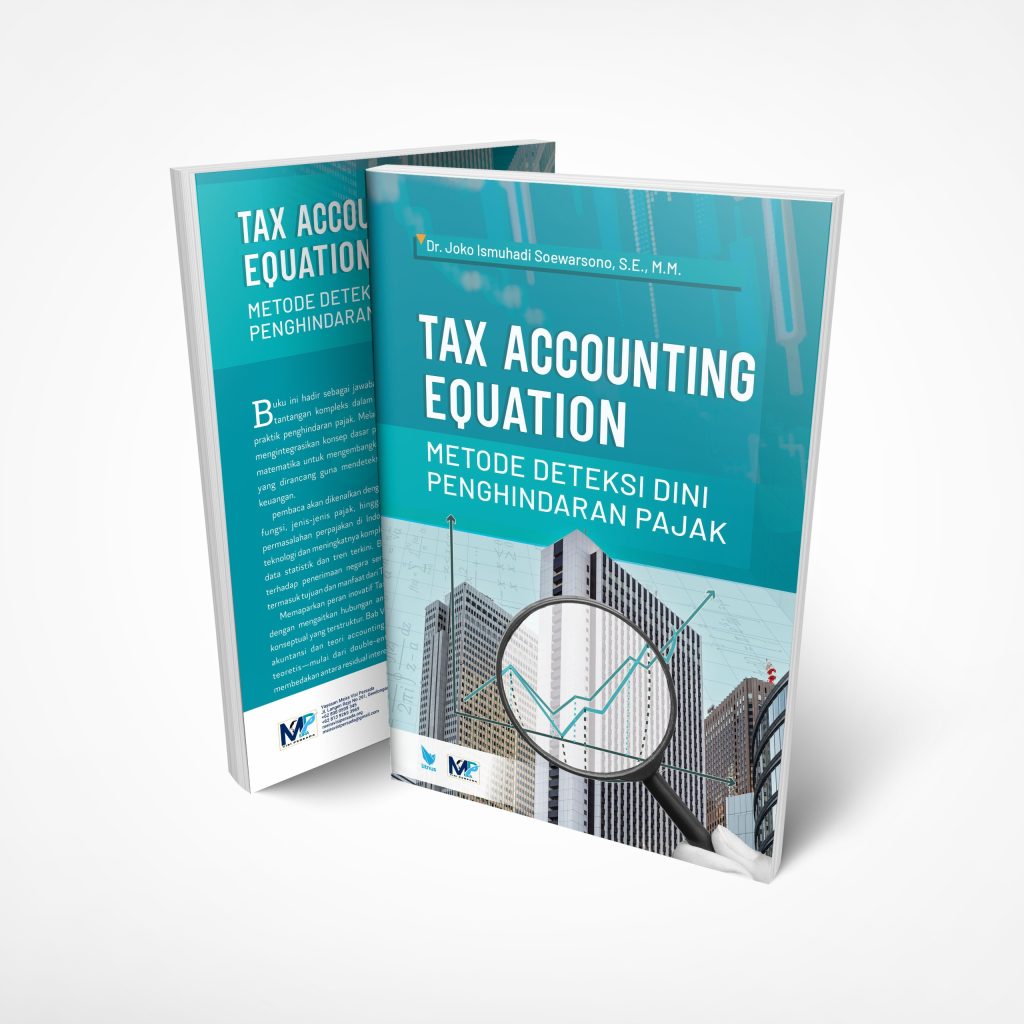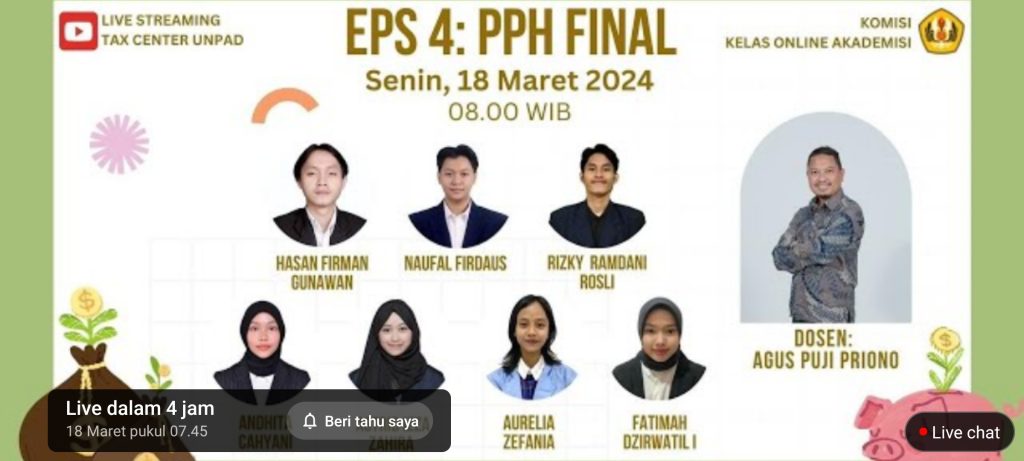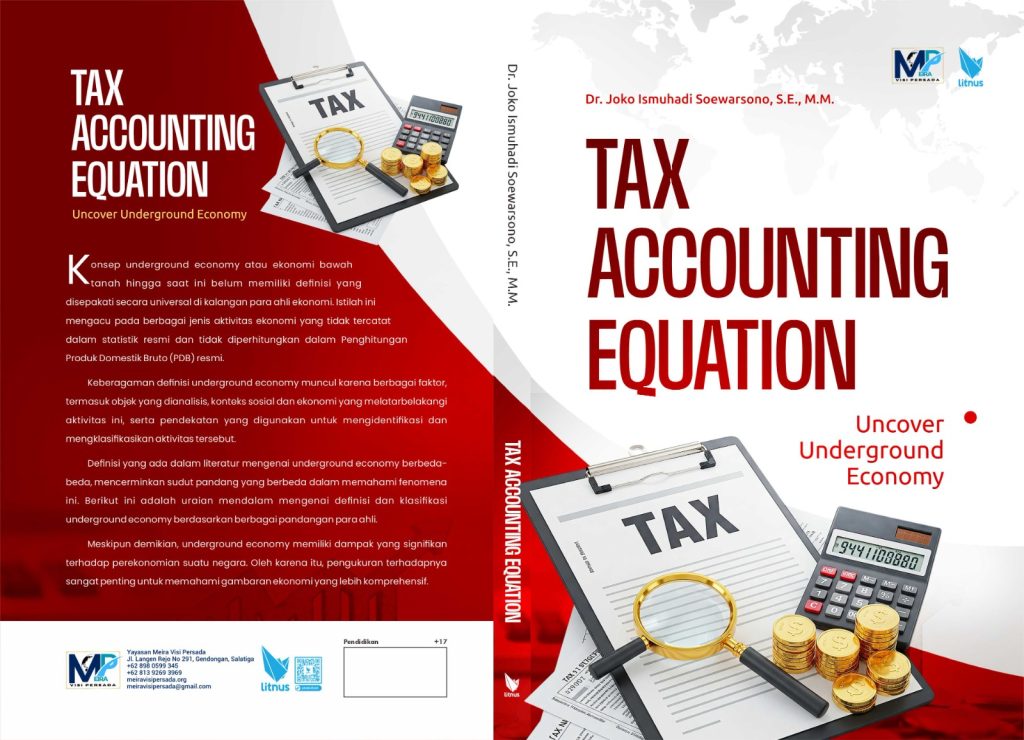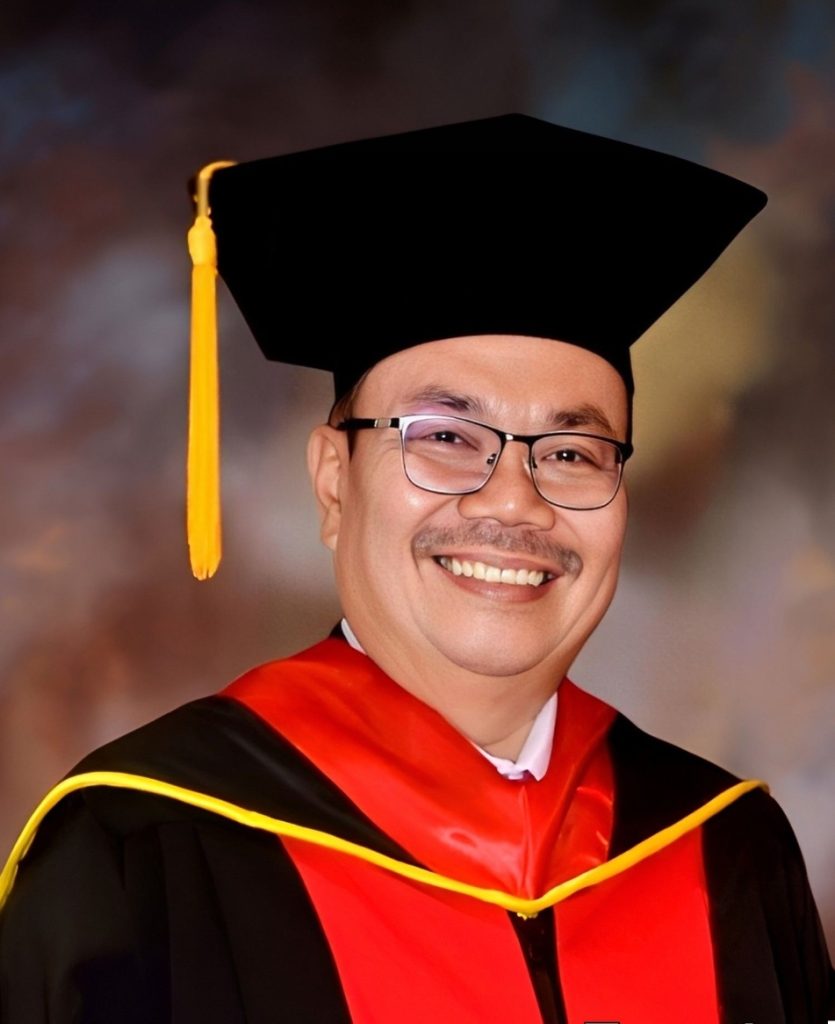
Dr. Joko Ismuhadi: A Pioneer in Forensic Tax Accounting and Indonesian Tax Law Reform
- Ekonomi
Tuesday, 08 April 2025 10:56 WIB

Jakarta, fiskusnews.com:
I. Executive Summary
Dr. Joko Ismuhadi, also known as Dr. Joko Ismuhadi Soewarsono, stands as a distinguished Indonesian expert in the intertwined fields of tax law and forensic accounting. His work has yielded significant contributions to the understanding and detection of tax-related crimes within Indonesia. Notably, he has developed the Tax Accounting Equation (TAE), a novel tool designed for forensic tax analysis, and has proposed substantial reforms to the Indonesian legal system concerning tax evasion, corporate criminal liability, and money laundering. Dr. Ismuhadi’s efforts are pivotal in fostering a more analytical and forensic approach to tax law in Indonesia, advocating for enhanced regulatory frameworks and enforcement mechanisms to combat increasingly complex financial offenses.
II. Introduction: The Critical Intersection of Tax Law and Forensic Accounting in Indonesia
The landscape of financial crime in Indonesia, particularly concerning tax evasion and money laundering, has become increasingly intricate, demanding sophisticated methods for detection and prevention. The escalating complexity of these offenses necessitates the expertise of professionals capable of integrating legal statutes with the granular details of accounting practices. Traditional legal frameworks alone often prove insufficient when confronted with the nuanced manipulations employed to obscure financial irregularities. This is where the specialized field of forensic accounting becomes indispensable, providing the essential tools and techniques to meticulously analyze financial data, identify anomalies, and ultimately furnish evidence of illicit activities. Dr. Joko Ismuhadi has emerged as a leading authority at this crucial intersection within the Indonesian context, making substantial contributions that bridge the gap between tax law and the investigative capabilities of forensic accounting. His work addresses the growing need for a more rigorous and analytical approach to safeguarding state revenues and combating financial crime.
III. Dr. Joko Ismuhadi: Academic and Professional Profile
A. Doctoral Achievement at Universitas Borobudur
Dr. Joko Ismuhadi’s academic journey culminated in the attainment of a doctoral degree from Universitas Borobudur, a significant milestone highlighted in a Kompasone article dated February 17, 2024. This academic achievement served as a platform for Dr. Ismuhadi to share his profound insights into the intricacies of tax crimes and the evolving tactics employed in money laundering schemes. His doctoral research, titled “LEGAL ACTIONS IN HANDLING TAX MANIPULATION BY CORPORATIONS IN TAX CRIME AND MONEY LAUNDERING,” as indicated by available records, underscores his commitment to addressing the core issues of this report. This academic rigor underpins his recognized expertise in seamlessly integrating the principles of law and accounting, particularly within the complex domain of tax law. The successful completion of his doctorate signifies a deep and sustained engagement with the subject matter, providing a robust foundation for his subsequent contributions to the field.
B. Expertise in Tax Law and Forensic Accounting
Dr. Joko Ismuhadi has garnered recognition for his extensive and in-depth research focusing on the multifaceted issue of tax manipulation. His work particularly emphasizes the pervasive problem of corporate tax evasion and its often-direct linkage to money laundering activities. Dr. Ismuhadi’s studies offer a critical forensic perspective on the methodologies employed in tracking financial irregularities, a subject of increasing importance as the techniques used for tax evasion become ever more sophisticated. His expertise lies in dissecting complex financial transactions and applying accounting principles to identify patterns and anomalies that suggest illicit activity. This forensic lens is vital in an era where traditional audit methods may struggle to keep pace with the ingenuity of financial criminals. Dr. Ismuhadi’s focus on the corporate level is particularly significant, given the potential for large-scale tax evasion that can be perpetrated by corporate entities, which often control substantial financial resources and engage in intricate financial operations.
IV. The Tax Accounting Equation (TAE): A Novel Forensic Tool
A. Design and Purpose of the TAE
One of Dr. Joko Ismuhadi’s most notable contributions to the field is the development of the Tax Accounting Equation (TAE), also referred to as Ismuhadi’s Equation. This innovative tool is specifically designed as a forensic tax-accounting method, serving as a crucial aid in the detailed analysis and early detection of income that has been either deliberately hidden or subjected to manipulation. The primary purpose of the TAE is to provide a structured framework for scrutinizing financial statements from a tax perspective, allowing investigators and auditors to identify potential discrepancies that might otherwise remain concealed. Its creation reflects a proactive approach to combating tax evasion by offering a systematic method for uncovering financial irregularities.
B. Mathematical and Accounting Principles
The Tax Accounting Equation operates by applying fundamental mathematical and accounting principles to the examination of financial data. This approach enables the uncovering of inconsistencies and imbalances within financial records that may serve as indicators of tax evasion practices and the subsequent steps taken to launder the ill-gotten gains. As detailed in available documentation, the TAE can be expressed in various forms, each highlighting different relationships within a company’s financial structure. One form, Revenues – Expenses = Assets – Liabilities, underscores the connection between a company’s profitability (Revenues – Expenses) and its net worth (Assets – Liabilities, representing Equity). Discrepancies in this equation could suggest manipulations aimed at either underreporting profits or misrepresenting the company’s financial standing for tax advantages. Another form, Revenues = Expenses + Assets – Liabilities, reveals a potential inverse relationship between reported revenues and liabilities, a pattern that Dr. Ismuhadi suggests could arise from taxpayers deceptively recording revenues as liabilities and expenses as assets through the use of temporary clearing accounts. This specific manipulation tactic, where revenues are intentionally misclassified to reduce taxable income, is a key target for detection using the TAE. The equation, in its various forms, is derived from the foundational Basic Accounting Equation (Assets = Liabilities + Equity) and its expanded versions, incorporating elements like revenues, expenses, and dividends. For tax analysis, particularly when examining taxable income, retained earnings, and dividends that might appear unusually low or negative due to fiscal adjustments, the Revenues – Expenses = Assets – Liabilities form proves especially relevant. The core function of the TAE is to serve as an analytical instrument for taxpayer financial statements, facilitating the early identification of tendencies toward tax avoidance or embezzlement through the application of accounting mathematical equations.
C. Practical Applications in Detecting Tax Evasion
The Tax Accounting Equation offers a tangible and systematic methodology for the practical analysis of financial statements, enabling the identification of potential red flags indicative of tax evasion. For instance, the form Revenues – Expenses = Assets – Liabilities can be used to scrutinize whether a company’s reported profitability aligns with its declared asset base. If a company consistently reports low profits but holds substantial assets, it could signal an underreporting of revenue to minimize tax obligations. Similarly, the form Revenues = Expenses + Assets – Liabilities is designed to detect the specific tactic of misclassifying revenues as liabilities, a method some taxpayers might employ to artificially deflate their taxable income. A case study involving palm oil processing companies illustrates the practical utility of the TAE. In this instance, the application of the equation helped reveal that certain taxpayers were strategically recording income as liabilities, effectively concealing it from tax authorities. This real-world example demonstrates the TAE’s capacity to uncover specific, often sophisticated, tax evasion techniques. By providing a structured and mathematical approach, the TAE equips auditors and investigators with a powerful tool to systematically examine financial data, identify unusual patterns or relationships, and thereby enhance the detection of tax evasion.
V. Proposals for Reforming Indonesian Tax Law
A. Simultaneous Prosecution of Tax Crimes and Money Laundering
Dr. Joko Ismuhadi has strongly advocated for a significant shift in the approach to prosecuting financial crimes in Indonesia, specifically calling for the simultaneous prosecution of tax offenses and money laundering. His rationale stems from the inherent interconnectedness of these two types of crimes. Tax evasion often serves as the predicate offense, generating the illicit funds that are subsequently laundered to obscure their criminal origin. By pursuing these offenses concurrently, Dr. Ismuhadi argues for a more efficient and effective use of law enforcement resources. Treating tax crimes and money laundering as separate, sequential issues can lead to delays, redundancies, and potential loopholes in the legal process. An integrated approach would allow for a more comprehensive investigation and a greater likelihood of successful prosecution, ultimately strengthening the deterrent effect against both tax evasion and the laundering of its proceeds.
B. Tax Evasion as a Form of Corruption
In a thought-provoking proposal, Dr. Ismuhadi suggests that the act of deliberately or negligently causing a loss of state revenue, such as by failing to register for a tax identification number, could be legitimately interpreted as a form of corruption. This perspective challenges the traditional categorization of tax evasion as solely a fiscal offense. By framing it as a form of corruption, which is generally viewed as a more egregious crime with significant societal consequences, Dr. Ismuhadi aims to elevate the perceived severity of tax evasion. The implications of this reinterpretation for legal frameworks and enforcement strategies could be substantial. It might lead to the application of anti-corruption laws, which often carry harsher penalties and broader investigative powers, to cases of significant tax evasion. This shift in perspective could foster a stronger deterrent effect and underscore the importance of tax compliance as a fundamental aspect of good governance and national integrity.
C. Incorporation of Corporate Criminal Liability and Vicarious Liability
Dr. Ismuhadi’s proposals for reforming Indonesian tax law include the critical incorporation of mechanisms such as corporate criminal liability and vicarious liability. He argues that these legal concepts are essential for effectively deterring and sanctioning both individual actors and corporate entities involved in tax-related wrongdoing. Corporate criminal liability would hold corporations directly responsible for tax offenses committed by their employees or agents, particularly in cases where the offense is systemic or benefits the corporation. This is crucial because corporations, as legal entities with substantial financial power, are capable of perpetrating large-scale tax evasion that can significantly harm state revenues. Vicarious liability, on the other hand, would extend responsibility to those in positions of authority within a corporation for the actions of their subordinates. Dr. Ismuhadi emphasizes the need for clear legal guidelines to distinguish between personal liability and corporate wrongdoing, ensuring that prosecutions are appropriately targeted while maintaining the overarching goal of recovering lost state revenue. His specific recommendations for legal reconstruction include imposing maximum criminal and administrative fines, potentially revoking corporate licenses as a severe deterrent, enhancing tax supervision and audits of corporations, and strengthening cooperation between tax authorities, law enforcement, and other relevant parties. He also advocates for broader legal reforms with stricter sanctions, a responsiveness to technological advancements in tax evasion techniques, and a strong emphasis on criminal penalties to deter corporate tax manipulation.
VI. The Significance of Corporate Criminal Liability in Tax Offenses
A. Corporations as Legal Entities Causing Economic Damage
Dr. Joko Ismuhadi’s research underscores the critical need to hold corporations accountable for significant tax losses, emphasizing their capacity as legal entities to inflict substantial economic harm through tax evasion. Corporations, by their very nature, often control vast financial resources and engage in complex transactions, making them potential vehicles for large-scale tax offenses that can severely undermine state revenue and hinder national development. The economic repercussions of corporate tax evasion can far outweigh those of individual evasion, impacting the government’s ability to fund essential public services and infrastructure projects. Therefore, Dr. Ismuhadi’s work highlights the importance of recognizing this potential for economic damage and establishing legal mechanisms to ensure corporations bear responsibility for their actions in the tax realm.
B. Distinguishing Personal and Corporate Liability
Dr. Ismuhadi emphasizes the necessity of establishing clear legal guidelines to effectively differentiate between personal liability and corporate wrongdoing in the context of tax offenses. This distinction is crucial for ensuring that individuals are not unfairly prosecuted for actions taken on behalf of a corporation, and conversely, that corporations cannot evade responsibility by attributing offenses solely to individual employees. Well-defined guidelines would facilitate the appropriate prosecution of tax crimes, holding the correct parties accountable while simultaneously preserving the fundamental objective of recovering lost state revenue. Currently, there appears to be a lack of explicit regulation regarding corporate criminal liability in Indonesian tax law, leading to uncertainty among investigators and prosecutors when dealing with potential corporate tax offenses. However, the recent introduction of corporate criminal liability in the New Criminal Code (Law No. 1 of 2023), slated to take effect on January 2, 2026, signals an evolving legal landscape that aligns with Dr. Ismuhadi’s advocacy. This new legislation recognizes corporations as legal subjects capable of committing crimes, potentially paving the way for more effective prosecution of corporate tax evasion. Furthermore, the significant association between corporate tax revenue and sustainable development goals underscores the broader importance of addressing corporate tax evasion effectively.
VII. Public Engagement and Influence on Policy
A. Media and Presentations
Dr. Joko Ismuhadi actively engages in the public dissemination of his expertise and ideas through various online platforms, notably including YouTube. These platforms serve as a valuable channel for him to explain complex concepts, such as the Tax Accounting Equation, in an accessible manner to a wider audience. His presentations often delve into the broader implications of tax evasion and money laundering within the Indonesian context, aiming to raise public awareness about these critical issues. This public engagement plays a vital role in fostering a more informed citizenry and potentially generating greater support for necessary tax reforms. By demystifying intricate financial and legal topics, Dr. Ismuhadi contributes to a public discourse that can, in turn, exert pressure on policymakers to address the challenges of tax crime more effectively.
B. Policy Advocacy
Beyond his academic pursuits and public outreach, Dr. Ismuhadi frequently interacts with policymakers and law enforcement agencies, directly engaging in policy advocacy. His work emphasizes the urgent need to modernize Indonesia’s tax regulations and enforcement methodologies to effectively counter increasingly sophisticated financial crimes. He consistently advocates for a more integrated and collaborative approach, one that fosters seamless cooperation among tax authorities, financial institutions, and law enforcement bodies. This direct engagement with those in positions of power and influence is crucial for translating his research findings and policy recommendations into tangible legal reforms and more effective strategies for combating financial crime.
VIII. Overall Impact and Future Directions
A. Shaping a Forensic and Analytical Approach to Tax Law
Dr. Joko Ismuhadi’s work has significantly influenced the evolution of tax law in Indonesia, steering it towards a more forensic and analytical orientation. His development of the Tax Accounting Equation, in particular, introduces a data-driven methodology for the detection of tax crimes. This emphasis on utilizing analytical tools and techniques represents a departure from more traditional approaches to tax audits and investigations. By providing a systematic framework for scrutinizing financial data, Dr. Ismuhadi’s contributions enhance the ability of tax authorities to identify anomalies and potential instances of tax evasion that might otherwise remain undetected. This shift towards a more forensic mindset in tax law enforcement promises to improve the overall effectiveness of efforts to safeguard state revenues.
B. Potential for Future Reforms
Dr. Ismuhadi’s proposals for integrating simultaneous legal proceedings in cases where tax evasion and money laundering are intertwined hold significant potential for shaping future reforms in Indonesia’s financial regulation. His work provides a comprehensive blueprint for modernizing the nation’s approach to combating financial crimes by advocating for a more holistic and coordinated legal framework. Furthermore, the Tax Accounting Equation offers a valuable and systematic method for analyzing financial statements, enabling the detection of illicit financial activities with greater precision. The integration of legal expertise with the analytical power of forensic accounting, as championed by Dr. Ismuhadi, is increasingly recognized as essential for creating a robust and effective financial regulatory system capable of addressing the evolving challenges of financial crime in the 21st century.
IX. Conclusion
Dr. Joko Ismuhadi stands as a pivotal figure in Indonesian tax law and forensic accounting, making enduring contributions to the study and detection of tax-related crimes. His development of the Tax Accounting Equation provides a novel and practical tool for forensic tax analysis, while his proposals for legal reform offer a forward-thinking vision for strengthening Indonesia’s capacity to combat tax evasion, corporate malfeasance, and money laundering. Dr. Ismuhadi’s pioneering work continues to stimulate critical debate and drive meaningful reform in how tax-related offenses are managed and prosecuted within Indonesia, solidifying his role as a leading expert in this vital field.
Table 1: Dr. Joko Ismuhadi’s Key Proposals for Indonesian Tax Law Reform
| Proposal | Rationale | Potential Impact | Implementation Status |
| Simultaneous prosecution of tax crimes and money laundering | Interconnectedness of offenses, efficiency in law enforcement | Increased conviction rates, stronger deterrent | Likely not fully implemented yet, but increasing awareness of the link. |
| Tax evasion as a form of corruption | Elevates severity, allows for application of anti-corruption laws | Harsher penalties, broader investigative powers, stronger deterrent effect | Conceptual proposal, requires legal and policy shifts. |
| Incorporation of corporate criminal and vicarious liability | Holds corporations accountable, addresses systemic wrongdoing | More effective prosecution of corporate tax evasion, increased compliance | Corporate criminal liability introduced in New Criminal Code (effective 2026). |
| Maximum criminal and administrative fines | Acts as a significant deterrent | Reduced tax manipulation, increased state revenue | Proposed, requires legislative action. |
| Revoking corporate licenses | Strong administrative penalty for severe offenses | Deterrent against significant tax evasion | Proposed, requires legislative and regulatory frameworks. |
| Enhanced tax supervision and audits of corporations | Improves detection and prevention of tax manipulation | Increased tax compliance, reduced revenue loss | Ongoing efforts, but Dr. Ismuhadi’s proposal emphasizes further strengthening. |
| Strengthened inter-agency cooperation | Facilitates information sharing and coordinated enforcement efforts | More effective investigations and prosecutions | Existing cooperation, but Dr. Ismuhadi advocates for deeper integration. |
| Stricter sanctions, responsiveness to technology | Addresses evolving methods of tax evasion, ensures appropriate penalties | More effective deterrence and detection | Ongoing need for legislative updates and technological advancements in enforcement. |
| Emphasis on criminal penalties as a deterrent | Underscores the seriousness of tax manipulation | Increased compliance, reduced tax crime | Aligns with the introduction of corporate criminal liability. |
Table 2: Key Features of the Tax Accounting Equation (TAE)
| Form of the Equation | Underlying Principles | Purpose in Tax Crime Detection | Example Application |
| Revenues – Expenses = Assets – Liabilities | Relationship between income statement (profitability) and balance sheet (net worth) | Identifying discrepancies that may indicate manipulation of either profitability or asset/liability reporting | Low reported profits despite substantial assets could signal hidden income. |
| Revenues = Expenses + Assets – Liabilities | Potential inverse relationship between revenues and liabilities | Detecting misclassification of revenues as liabilities and expenses as assets using clearing accounts | Recording revenues as liabilities to understate taxable income. |
| General Form (Various derivations) | Application of basic and expanded accounting equations | Early detection of tendencies toward tax avoidance and/or embezzlement | Identifying unusual balances or relationships in financial statements. |
Reporter: Marshanda Gita – Pertapsi Muda
Share
Berita Lainnya
Menganalisis Strategi Penghindaran Pajak Melalui Persamaan Akuntansi Pajak Dr. Joko Ismuhadi dalam Konteks Indonesia
Dr. Joko Ismuhadi’s Tax Accounting Equation: A Forensic Tool for Indonesian Tax Analysis
Ismuhadi’s Equation: An Indonesian Innovation in Forensic Tax Analysis
SIGI [Single Digital Identity]: FROM SINGLE 2 INFINITY
[💊 Webinar SPT Series Vol.III: Penyusunan SPT Badan untuk Industri Kesehatan 🩺]
Potensi Koperasi Desa Merah Putih dalam Formalisasi Ekonomi Bawah Tanah dan Peningkatan Pendapatan Pajak di Indonesia
Rekomendasi untuk Anda

Berita Terbaru
Eksplor lebih dalam berita dan program khas fiskusnews.com
Tag Terpopuler
# #TAE
# #TAX ACCOUNTING EQUATION
# #TAX FRAUD
# #TAX EVASION











